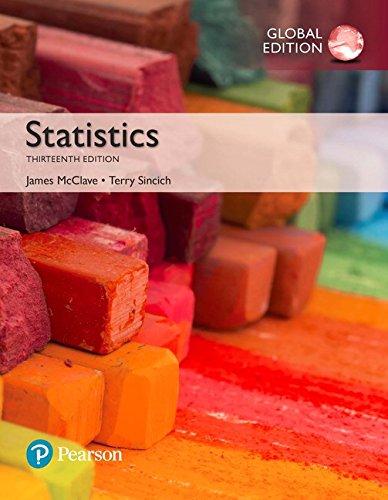The placebo effect and pain. According to research published in Science (Feb. 20, 2004), the mere belief
Question:
The placebo effect and pain. According to research published in Science (Feb. 20, 2004), the mere belief that you are receiving an effective treatment for pain can reduce the pain you actually feel. Researchers tested this placebo effect on 24 volunteers as follows: Each volunteer was put inside a magnetic resonance imaging (MRI) machine for two consecutive sessions. During the first session, electric shocks were applied to their arms and the blood oxygen level–dependent (BOLD) signal (a measure related to neural activity in the brain) was recorded during pain. The second session was identical to the first, except LO5 that, prior to applying the electric shocks, the researchers smeared a cream on the volunteer’s arms. The volunteers were informed that the cream would block the pain when, in fact, it was just a regular skin lotion (i.e., a placebo). If the placebo is effective in reducing the pain experience, the BOLD measurements should be higher, on average, in the first MRI session than in the second.
a. Identify the target parameter for this study.
b. What type of design was used to collect the data?
c. Give the null and alternative hypotheses for testing the placebo effect theory.
d. The differences between the BOLD measurements in the first and second sessions were computed and summarized in the study as follows: nd = 24, xd = .21, sd = .47. Use this information to calculate the test statistic.
e. The p-value of the test was reported as p@value = .02.
Make the appropriate conclusion at a = .05.
Step by Step Answer:






